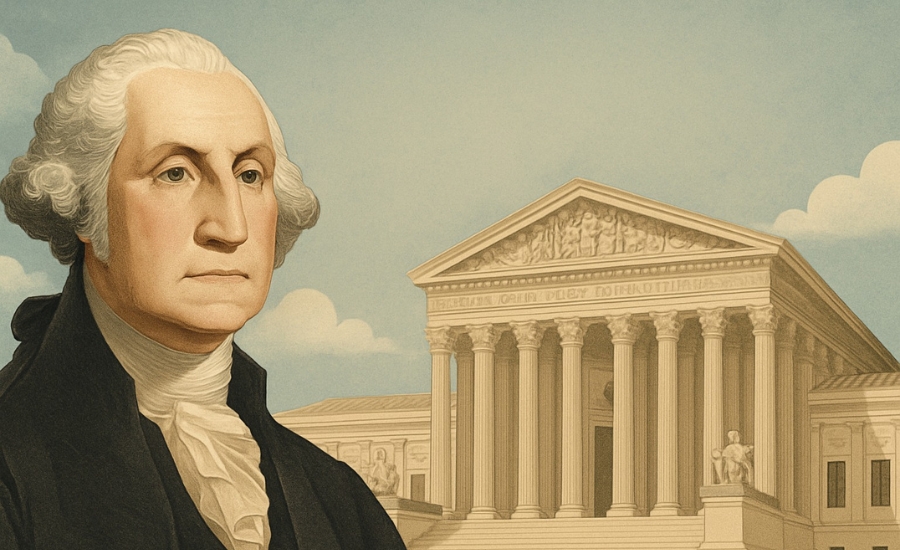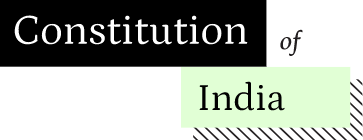
On April 8, 1793, Edmond-Charles Genet, the newly appointed ambassador of revolutionary France, arrived on American soil. Rather than proceed directly to Philadelphia, then the nation’s capital, to present his credentials to President George Washington, Genet landed in Charleston, South Carolina. His arrival marked the beginning of a diplomatic episode that would shape the relationship between the U.S. Supreme Court and the executive branch for generations.
Genet’s choice of Charleston was deliberate. The city was a stronghold of pro-French sentiment, and he intended to channel that enthusiasm into tangible support for France’s war against Britain and Spain. In Philadelphia, members of the Cabinet—including Secretary of State Thomas Jefferson and Treasury Secretary Alexander Hamilton—watched his maneuvers with growing unease.
At the time, the United States had declared itself neutral in the European conflict. Genet, however, disregarded this policy, commissioning private American vessels and refitting French ships in American ports to attack British targets. He invoked earlier treaties between France and the United States, insisting that the revolutionary government was entitled to American support. The American leadership, acutely aware of the nation’s fragile position, declined to intervene. On April 22, 1793, President Washington issued a formal proclamation of neutrality, and his Cabinet pressed Genet to cease his activities.
Genet persisted, seeking to rally American support for France’s military campaign and placing Washington’s administration in a precarious position. The Cabinet now faced a series of thorny questions: Did treaty obligations require the United States to assist France? Could neutrality be maintained without antagonizing Britain? And would a refusal to help damage relations with a revolutionary government that, in many ways, echoed America’s own recent struggle?
Uncertain how to navigate these legal and diplomatic complexities, the Cabinet turned to an unexpected source for advice: the Supreme Court of the United States.
The United States Constitution contains no provision for advisory opinions, despite the fact that English law and several state constitutions at the time permitted courts to issue them. Madison’s notes from the Constitutional Convention suggest that the Framers deliberately chose not to include any explicit language requiring the Supreme Court or other federal courts to serve in an advisory capacity.
In a letter to the Court, Jefferson outlined the dilemmas arising from the European war and their implications for American neutrality. He wrote: “The war which has taken place among the powers of Europe produces frequent transactions within our ports and limits, on which questions arise of considerable difficulty, and of greater importance to the peace of the U.S.” Jefferson conveyed the President’s wish to seek the Court’s guidance: “The President would therefore be much relieved if he found himself free to refer questions of this description to the opinions of the Judges of the Supreme Court of the U.S., whose knowledge of the subject would secure us against errors dangerous to the peace of the U.S., and whose authority would ensure the respect of all parties…”
He concluded by asking whether it would be appropriate for the public to avail itself of the Judges’ advice on these matters.
This was the first instance in American constitutional history where the executive branch formally sought the Supreme Court’s advice, and the stakes were high. Foreign relations had rarely been the province of judges.
The Court’s initial response, addressed to President Washington, was deferential: “…We are not only disposed but desirous to promote the welfare of our Country, in every way that may consist with our official Duties. We are pleased, Sir, with every opportunity of manifesting our Respect for you, and are solicitous to do whatever may be in our power to render your administration as easy and agreeable to yourself as it is to our Country…”
Yet the Justices made clear that before proceeding, they needed to determine whether providing such advice was constitutionally appropriate. The Cabinet’s submission included twenty-nine detailed questions on the United States’ obligations under its treaties with France, the laws of neutrality, and international custom. These ranged from the legality of arming French warships in American ports to the handling of captured enemy vessels and the broader conduct of belligerents within U.S. territory.
The questions demanded interpretation not only of specific treaty provisions but also of foundational principles of international law and neutrality. While rooted in legal doctrine, the issues reflected the United States’ precarious position as a fledgling republic surrounded by warring powers.
Ultimately, the Supreme Court’s answer was unequivocal: it would not provide the advice requested by the executive. The Court’s reasoning, set out in a formal reply, illuminated the constitutional boundaries between the branches of government:
“…The lines of separation drawn by the Constitution between the three departments of government—their being in certain respects checks on each other—and our being judges of a court in the last resort—are considerations which afford strong arguments against the propriety of our extrajudicially deciding the questions alluded to; especially as the power given by the Constitution to the President of calling on the Heads of Departments for opinions, seems to have been purposely as well as expressly limited to executive Departments…”
In plain terms, the Constitution had reserved such matters for the executive, limiting the President’s authority to request opinions to officials within his own branch. The judiciary was not included. The Court’s response, measured but firm, marked one of the earliest interpretations of the separation of powers and the constitutional limits of judicial authority.
This episode set a lasting precedent: the Supreme Court would not serve as an advisory body to the President. The Court drew a clear line between legal judgment and political decision-making, affirming its role as a judicial, not political, actor.
Yet, constitutional principle was not the only factor as some scholars suggest. The Court had a range of motivations including the aim to avoid entanglement in a politically charged and diplomatically sensitive crisis. The questions before it were far-reaching, complex, and deeply political, touching on foreign policy, treaty interpretation, and neutrality in a volatile international context. Rather than risk embroilment, the Court declined to answer, doing so with tact.
The Justices closed their response with a gesture of respect: “…We exceedingly regret every event that may cause embarrassment to your administration; but we derive consolation from the reflection, that your judgment will discern what is right, and that your usual prudence, decision and firmness will surmount every obstacle to the preservation of the rights, peace, and dignity of the United States…”
In declining to offer ‘extrajudicial advice’, the Court reaffirmed its constitutional role and set the tone for a tradition of judicial restraint in matters of executive judgment throughout subsequent centuries of U.S. history. Indeed, vibrant debates about the judiciary’s advisory role have continued worldwide, as seen in recent years—most recently in the case of the presidential reference in India.
As for Genet, after his recall as French minister in 1794—prompted by his defiance of American neutrality and a series of controversial actions—he faced a warrant for his arrest from the radical Jacobin government in France. With his political allies, the Girondins, out of power and fearing execution if he returned, Genet sought asylum in the United States. President Washington, despite all the trouble Genet had caused, granted his request—without, it should be noted, seeking the advice of the Supreme Court.
